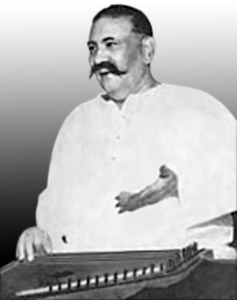 Sargam singing was introduced into khayal only during the 20th century. It is generally accepted that it was Abdul Karim Khan who had popularised the use of sargam, following his exposure to, and absorption of it from Karnatic music, where it is used enthrallingly while elaborating specific sections of the composition. Aman Ali Khan of Bhendi Bazaar gharana further refined its use in khayal and made it an indispensable part of the gharana`s gayaki. Ustad Bade Ghulam Ali Kahn and Ustad Amir Khan used sargam and sargam-patterns with great effect during their renditions.
Sargam singing was introduced into khayal only during the 20th century. It is generally accepted that it was Abdul Karim Khan who had popularised the use of sargam, following his exposure to, and absorption of it from Karnatic music, where it is used enthrallingly while elaborating specific sections of the composition. Aman Ali Khan of Bhendi Bazaar gharana further refined its use in khayal and made it an indispensable part of the gharana`s gayaki. Ustad Bade Ghulam Ali Kahn and Ustad Amir Khan used sargam and sargam-patterns with great effect during their renditions.
The notes of the raaga are here sung in many attractive ways and in different combinations. The primary notes of the raaga (its vadi and samvadi) are oft highlighted. At first, the singer renders the sargams plainly the raaga-scale, and then proceeds to invigorating and intricate configurations. Often, sargam tans, or fast tempo renderings of the notes, are also rendered at this phase. Singers use this section to showcase their adroitness over the notes in convincing ways.
Singers are, for the most part, at liberty to use sargam or avoid it altogether. Yet the drift now-a-days is to use it prudently or, at times, excessively. Bhendi Bazaar, Patiala, Rampur-Sahaswan and Mewati gharanas make abundant to sensible use of it during their recitals. Jaipur-Atrauli and Gwalior gharanas generally avoid singing sargam and instead sing it in aakaar approaches. However, individual variants do subsist within these traditions.




















